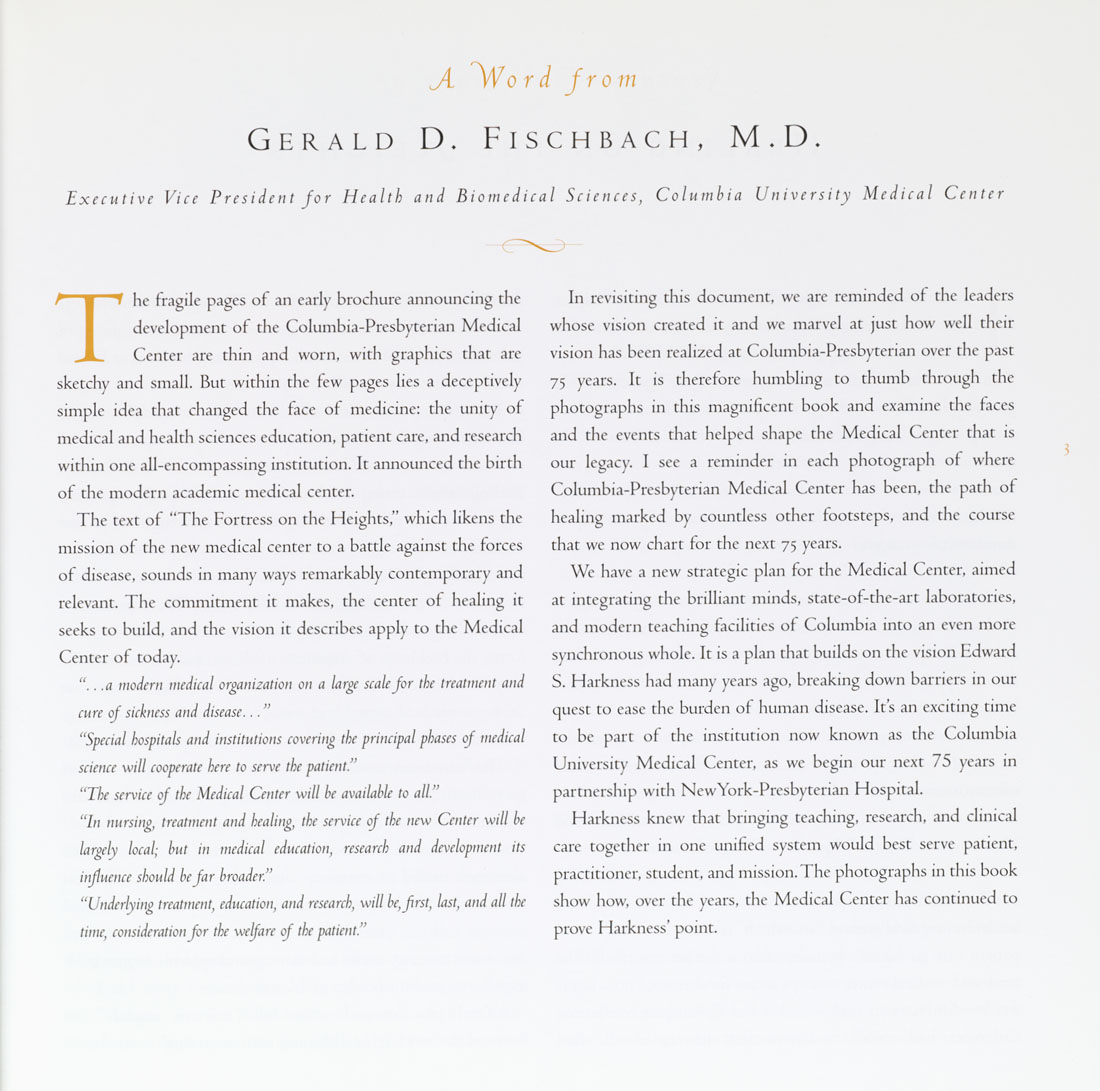A. no r i front
Gerald D. Fischbach, M.D.
Executive Vice President for Health and Biomedical Sciences, Columbia University Medical Center
The fragile pages of an early brochure announcing the
development of the Columbia-Presbyterian Medical
Center are thin and worn, with graphics that are
sketchy and small. But within the few pages lies a deceptively
simple idea that changed the face of medicine: the unity of
medical and health sciences education, patient care, and research
within one all-encompassing institution. It announced the birth
of the modern academic medical center.
The text of "The Fortress on the Heights," which likens the
mission of the new medical center to a battle against the forces
of disease, sounds in many ways remarkably contemporary and
relevant. The commitment it makes, the center of healing it
seeks to build, and the vision it describes apply to the Medical
Center of today.
".. .a modern medical organization on a large scale for the treatment and
cure of sickness and disease... "
"Special hospitals and institutions covering the principal phases of medical
science will cooperate here to serve the patient."
"The service of the Medical Center will he available to all."
"In nursing, treatment and healing, the service of the new Center will be
largely local; but in medical education, research and development its
influence should be far broader."
"Underlying treatment, education, and research, will he, first, last, and all the
time, consideration for the welfare of the patient"
In revisiting this document, we are reminded of the leaders
whose vision created it and we marvel at just how well their
vision has been realized at Columbia-Presbyterian over the past
75 years. It is therefore humbling to thumb through the
photographs in this magnificent book and examine the faces
and the events that helped shape the Medical Center that is
our legacy. I see a reminder in each photograph of where
Columbia-Presbyterian Medical Center has been, the path of
healing marked by countless other footsteps, and the course
that we now chart for the next 75 years.
We have a new strategic plan for the Medical Center, aimed
at integrating the brilliant minds, state-of-the-art laboratories,
and modern teaching facilities of Columbia into an even more
svnchronous whole. It is a plan that builds on the vision Edward
S. Harkness had many years ago, breaking down barriers in our
quest to ease the burden of human disease. It's an exciting time
to be part of the institution now known as the Columbia
University Medical Center, as we begin our next 75 years in
partnership with NewYork-Presbyterian Hospital.
Harkness knew that bringing teaching, research, and clinical
care together in one unified system would best serve patient,
practitioner, student, and mission. The photographs in this book
show how, over the years, the Medical Center has continued to
prove Harkness' point.
|








